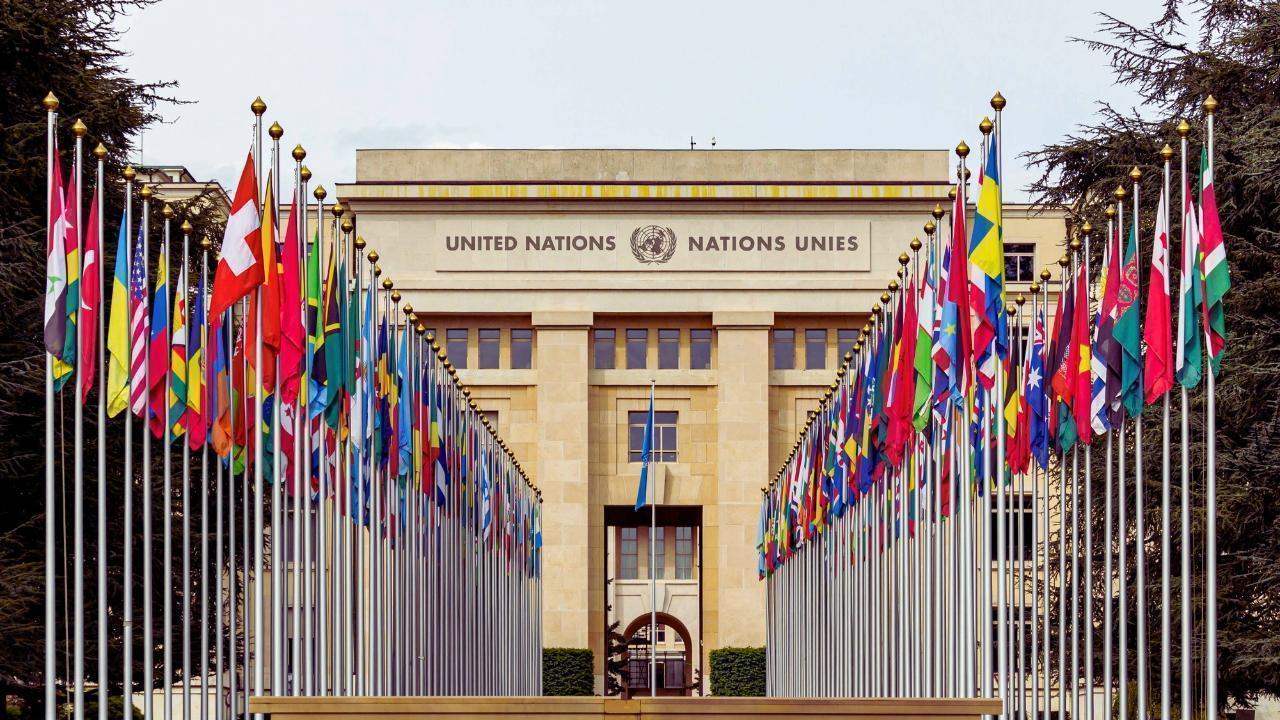You have not yet added any article to your bookmarks!

Join 10k+ people to get notified about new posts, news and tips.
Do not worry we don't spam!

Post by : Anis Farhan
After years of uncertainty marked by pandemic disruptions, supply chain bottlenecks, and geopolitical tensions, the global trade landscape is showing signs of recovery. According to the latest World Trade Organization forecast, 2025 could mark a turning point, with trade volumes expected to rise at a healthier pace than in recent years. Asia, home to some of the fastest-growing economies and the most dynamic production hubs, is poised to play a central role in driving this resurgence.
This shift is not just a bounce-back from a period of stagnation—it’s part of a deeper reconfiguration of trade routes, production priorities, and market strategies. The last few years have tested the resilience of the global trading system, and Asia’s relative adaptability has placed it at the forefront of the upcoming expansion.
Manufacturing remains the backbone of Asia’s economic influence. From advanced semiconductors in South Korea and Taiwan to large-scale garment production in Bangladesh and Vietnam, the region’s ability to produce at both scale and speed continues to attract global demand.
In 2024, Asian factories showed signs of a strong rebound, with industrial output rising in double digits for several key economies. This momentum is set to accelerate in 2025 as consumer demand strengthens in Europe and North America, and as emerging markets in Africa and Latin America begin sourcing more goods from Asia.
Automation, smart factories, and advanced robotics are also making manufacturing more efficient. Nations that were once dependent on low-cost labor alone are now competing on technological sophistication, ensuring they remain competitive even as wages rise.
Technology and electronics will be one of the primary engines of trade growth. Asia’s role as a global electronics hub has been reinforced by a surge in demand for semiconductors, electric vehicle batteries, and renewable energy technology components.
Countries like Japan, South Korea, China, and Singapore are not just manufacturing these products—they are innovating them. The race for more efficient solar panels, lighter and more powerful batteries, and faster processors has placed Asian firms at the cutting edge of global technology.
With the growing push for clean energy and electrification, orders for solar modules, wind turbine parts, and EV battery cells from Asian suppliers are expected to soar in 2025. This technological export boom is set to contribute significantly to the WTO’s projected global trade growth.
The last few years exposed weaknesses in the global shipping and logistics network. Container shortages, port backlogs, and freight rate spikes made headlines. In response, Asian economies have been investing heavily in modernizing their trade infrastructure.
Major ports in Singapore, Shanghai, Busan, and Colombo are expanding capacity and implementing AI-driven logistics management systems to cut wait times and improve efficiency. Rail and road networks linking production hubs to shipping centers are being upgraded to ensure goods move more quickly from factories to consumers.
These improvements mean that Asia is not only producing more goods but is also delivering them faster and more reliably—a critical factor in retaining and expanding global market share.
The rise of cross-border e-commerce is another factor shaping Asia’s trade dominance. Platforms connecting sellers directly to buyers worldwide are giving even small and medium-sized enterprises (SMEs) access to global markets.
In 2025, e-commerce exports from Asia are expected to grow at a double-digit pace, fueled by rising internet penetration, mobile payment adoption, and efficient last-mile delivery systems. Countries like China, South Korea, and Singapore are leading in cross-border retail exports, but emerging economies such as Thailand, Malaysia, and the Philippines are rapidly catching up.
For consumers abroad, this means faster access to a wider range of Asian products, from electronics and fashion to specialty foods and beauty products.
Energy trade patterns are also evolving. Asia’s demand for liquefied natural gas, oil, and coal is being balanced by its growing role as a supplier of clean energy technologies. The WTO’s forecast highlights how trade in energy-related goods—especially renewable energy equipment—is becoming a key growth driver.
In 2025, countries like Indonesia and Malaysia are expected to increase exports of critical minerals such as nickel and rare earth elements, essential for battery production. Meanwhile, large-scale renewable energy projects in India, China, and Vietnam are turning the region into both a producer and a consumer of green technology.
While the outlook is optimistic, the road ahead is not without challenges. The WTO notes that geopolitical risks remain high. Conflicts, trade disputes, or sanctions could still disrupt supply chains and dampen demand.
Inflationary pressures, though easing in many regions, could also impact consumer spending and investment decisions. For export-heavy economies, a slowdown in major markets like the United States or the European Union could quickly ripple across Asia’s production lines.
Additionally, climate change poses a growing threat. Extreme weather events have already disrupted agricultural exports and manufacturing output in parts of the region. Building climate-resilient infrastructure and supply chains will be essential to sustaining trade growth.
Asian governments are aware of both the opportunities and risks, and many are acting proactively. Trade agreements are being renegotiated or expanded to ensure market access and reduce barriers. ASEAN members are deepening regional integration, while individual countries are forging new bilateral deals with partners in Africa, Europe, and the Americas.
Investment incentives are being offered to attract high-value industries, particularly in technology, pharmaceuticals, and green energy. Education and workforce training programs are being expanded to meet the demands of more advanced and automated production systems.
These strategies are designed not just for immediate gains but to ensure Asia’s leadership position in global trade for the next decade.
Semiconductors and Advanced Electronics: Driven by demand in AI, EVs, and cloud computing.
Renewable Energy Components: Solar panels, wind turbines, and battery storage systems.
Pharmaceuticals and Medical Devices: Boosted by growing healthcare needs in emerging markets.
Agricultural Exports: Niche products like specialty rice, spices, and seafood gaining traction.
Digital Services and Software: Rising demand for Asian-developed apps, fintech solutions, and gaming.
Consumers around the world stand to benefit from Asia’s trade surge. More competitive pricing, greater product variety, and shorter delivery times are likely outcomes. For Asian consumers, increased imports mean access to a wider range of foreign goods, from luxury items to specialized machinery.
However, this competition will push local producers to raise quality standards and innovate, ensuring domestic industries remain competitive.
If Asia continues on its current trajectory, the global economic balance will tilt further toward the East. Not only will the region dominate manufacturing and exports, but it will also increasingly shape global consumption patterns, investment flows, and technological standards.
For other regions, this means adapting to a world where Asia is not just a supplier but also a trendsetter in innovation, sustainability, and market strategy.
The WTO’s 2025 forecast is more than just a statistical projection—it’s a recognition of Asia’s central role in the global economy. The coming year offers a rare combination of strong demand, improving infrastructure, and technological leadership.
While risks remain, the momentum is undeniable. For governments, businesses, and consumers, 2025 could be the year Asia not only drives global trade growth but also redefines what leadership in the global economy looks like.
This article is based on economic projections and current market trends. It is intended for informational purposes only and does not constitute financial or investment advice.










Two Telangana Women Die in California Road Accident, Families Seek Help
Two Telangana women pursuing Master's in the US died in a tragic California crash. Families urge gov

Ranveer Singh’s Dhurandhar Roars Past ₹1100 Cr Worldwide
Ranveer Singh’s Dhurandhar stays unstoppable in week four, crossing ₹1100 crore globally and overtak

Asian Stocks Surge as Dollar Dips, Silver Hits $80 Amid Rate Cut Hopes
Asian markets rally to six-week highs while silver breaks $80, driven by Federal Reserve rate cut ex

Balendra Shah Joins Rastriya Swatantra Party Ahead of Nepal Polls
Kathmandu Mayor Balendra Shah allies with Rastriya Swatantra Party, led by Rabi Lamichhane, to chall

Australia launches review of law enforcement after Bondi shooting
Australia begins an independent review of law enforcement actions and laws after the Bondi mass shoo

Akshaye Khanna exits Drishyam 3; Jaideep Ahlawat steps in fast
Producer confirms Jaideep Ahlawat replaces Akshaye Khanna in Drishyam 3 after actor’s sudden exit ov